
Before you begin painting the ceiling, preparing the room will ensure the job goes more smoothly.
- Remove all furniture from the room, if possible, to avoid any spatter or paint damage.
- Prep the ceiling by removing any dust or grime. Paint will adhere poorly to a dusty ceiling.
- Check the ceiling for cracks or holes, which you can repair with spackle or caulk.
- Removing ceiling fixtures will make the job easier. Be sure to turn off power to the fixtures at the breaker or fuse box before removing the hardware. Place the hardware in plastic bags and set aside.
Tip: Wear safety goggles and consider wearing a hat to keep paint spatter from hair.
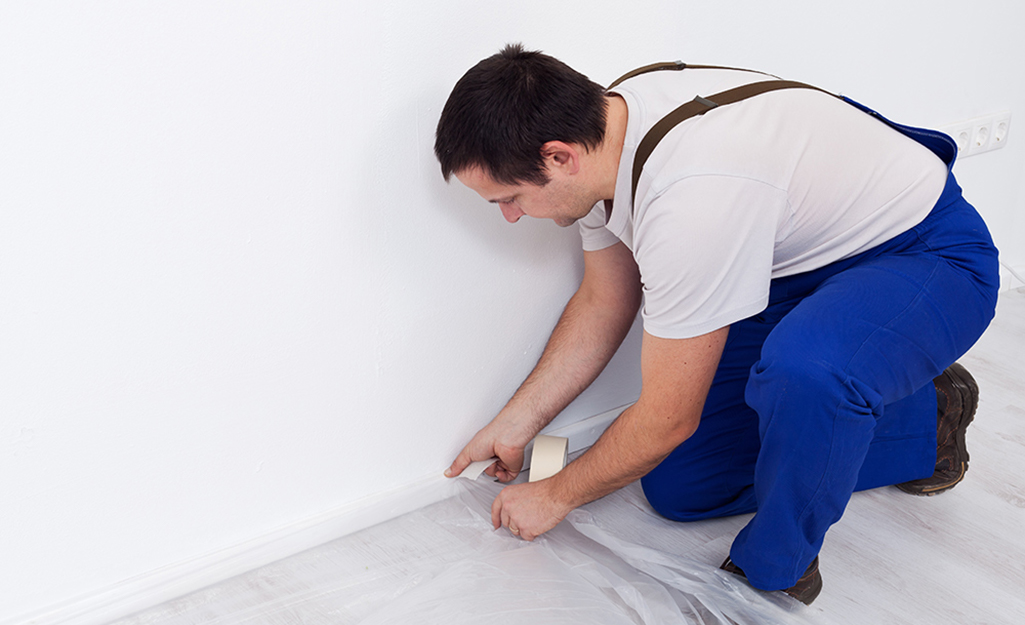
Cover the floor and pieces of furniture too big to move by putting down drop cloths.
- For the most effective protection, overlap the drop cloths by at least 12 inches.
- Tape drop cloths to baseboards to ensure they stay in place.
- Use drop cloths or painter’s tape to protect windows, doors and trim as needed.
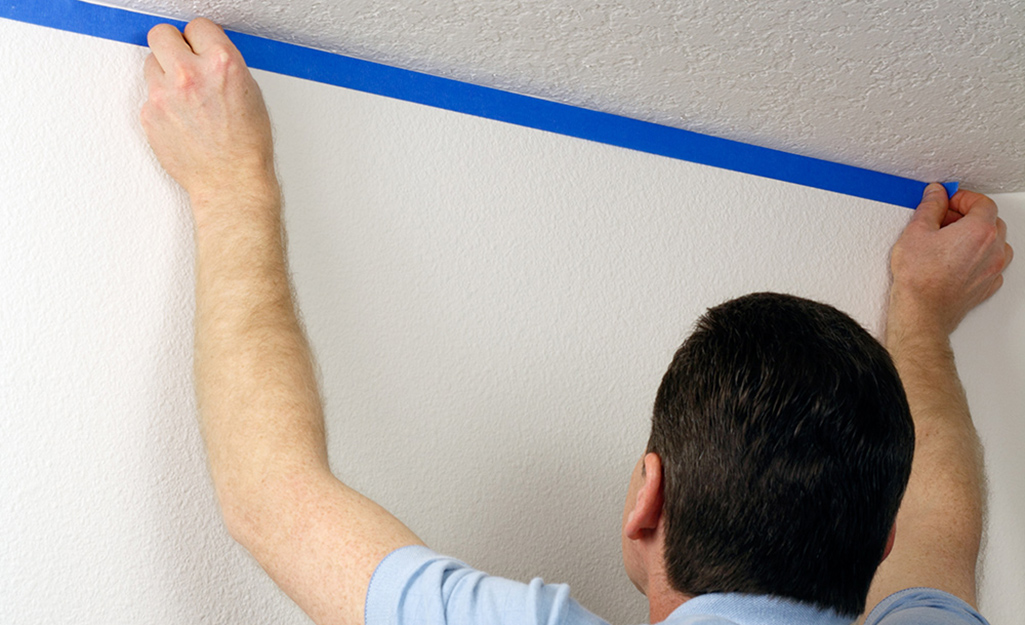
If you’re only painting a room’s ceiling, mask off the tops of the walls or the crown molding with 2-inch painter's tape to keep roller marks off the walls. Avoid 1-inch tape, which is not wide enough to prevent the paint roller from touching the wall.
Tip: If you’re painting the entire room, start with the ceiling. Taping the walls should not be necessary.
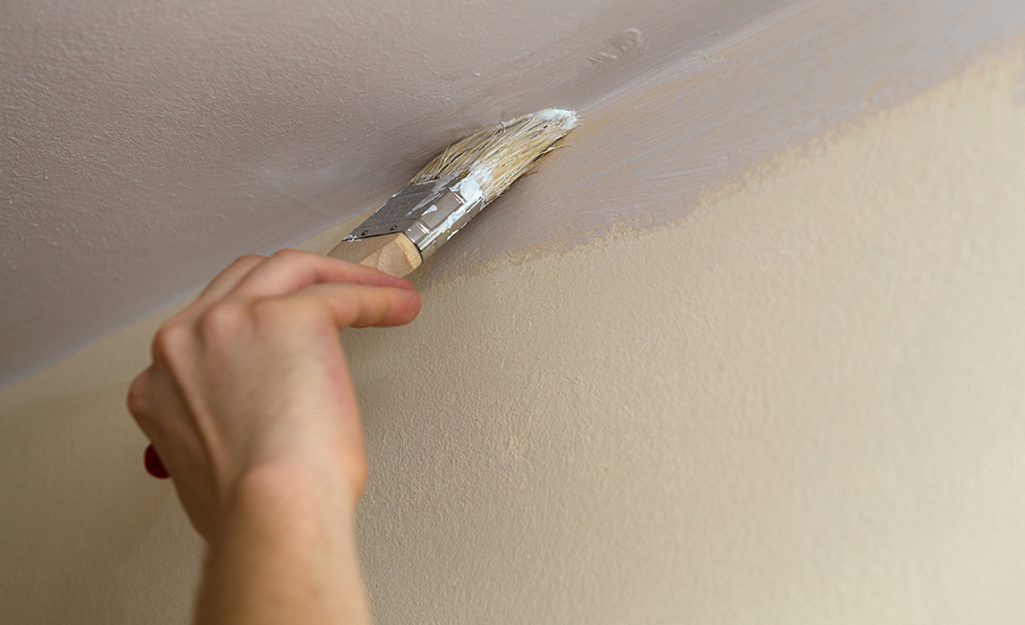
User a roller to prime the ceiling with a coat of latex paint primer, especially if your ceiling has stains. Use interior latex drywall primer on a smooth or lightly textured ceiling and a high-build primer on a ceiling with a deeper texture.
- Allow the primer to dry completely according to instructions.
- Before applying the paint with rollers, use a paint brush to “cut the corners” or paint the edges where the ceiling meet the wall. This will ensure paint will cover areas the roller might miss as well as conceal any brush marks left behind.
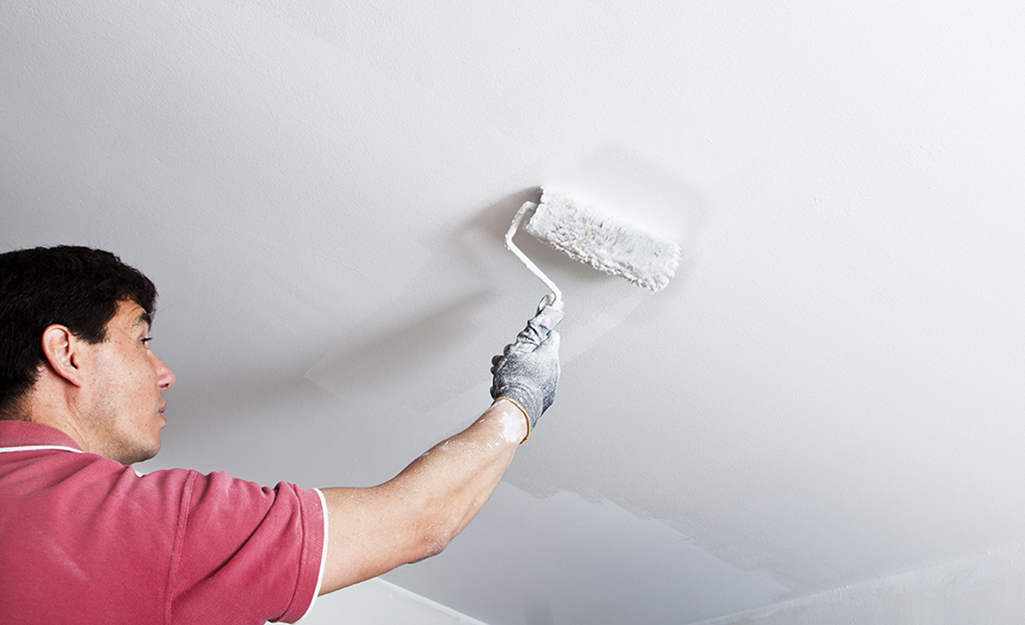
The best way to paint a ceiling is to use a paint roller and work in grid-like sections of 3 square feet to 5 square feet each. This helps keep edges wet and allows you to see your progress to ensure an even coat.
- For smooth ceilings, use a low nap roller. For a textured ceiling, use a roller with 1/2-inch or 3/4-inch nap.
- Regularly use the paint tray to load the roller with ceiling paint and roll slowly.
- Begin rolling when the paint cut line is still wet.
- Begin in a corner and roll in overlapping rows.
- Do not roll directly over your head.
- Slightly vary the direction of your rolling, as a perfectly straight roll may show overlap marks. Continue until the section is done.
- Continue applying paint, rolling out and blending with the cut-in edge and the previous section until the ceiling is complete.
Tip: Wipe any drips or spatters immediately with a damp rag.
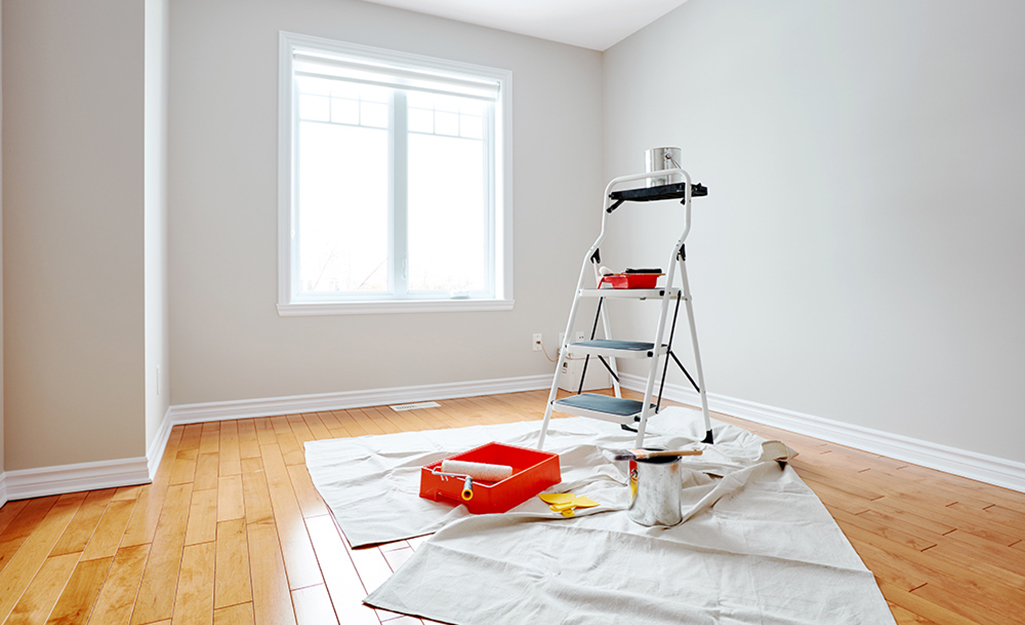
If you opted to paint your ceiling a brighter color or shade of white that needs to stand out, a second coat may be needed.
- Allow paint to fully dry according to instructions before applying a second coat.
- Apply the second coat in one direction, painting quickly until the entire surface is covered.
- Once all coats have been applied, begin cleaning up the room.
- Carry your paint rollers, brushes, paint trays and other supplies to a garage sink or large tub for washing. Clean with warm soap and water, squeezing out the paint remnants, and then use water to rinse out the soap. Set out to air dry.
- Remove any painter’s tape when the paint is dry to the touch.
- Reattach ceiling light fixtures.

Follow these painting tips when learning how to paint a ceiling.
- Always use ceiling paint as opposed to wall paint.
- Consider the color options. Standard white ceiling paint will brighten a room, but a colored ceiling may make the room seem bigger.
- Mildew and water stains will bleed through even the best paint, so it may be necessary to use a stain-blocking primer before painting. Oil-based primers work best for water stains while shellac-based primers are more effective against smoke or nicotine stains.
- If you are painting an entire room, begin with the ceiling before you paint the walls.
- Invest in a paint roller extension. This will alleviate much of the strain and awkwardness from reaching above your head to paint, and will help you reach higher spots and angles more easily.
- Use a sturdy step ladder as needed.
- For textured ceilings, do a test roll to make sure the material doesn't fall off. If the texture seems loose, using a paint sprayer on the ceiling may be your best option.
- For extremely high ceilings, such as cathedral ceilings, consider hiring a professional.
The ceiling is considered the “fifth wall” of your room, so when painting a ceiling, apply the same care you would bring to any other paint job.
Blue Lake. Roofing Supply delivers. Just say when, where and how. Free delivery on over one 1000 items.

